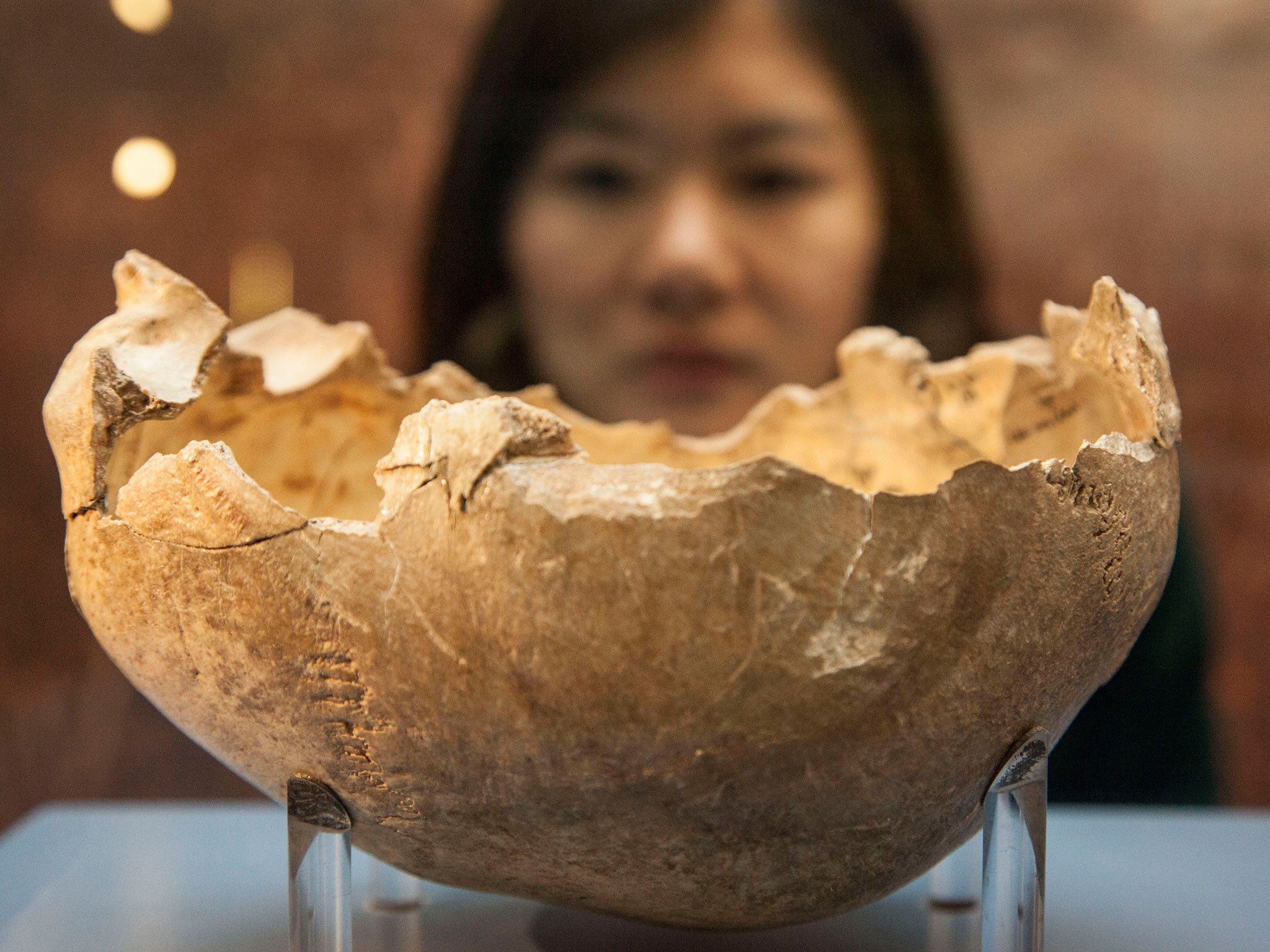Somerset cannibals: Early Britons ate each other's remains and turned their skulls into cups
New research offers the best evidence yet that cannibalism took place in Somerset's Cheddar Gorge 15,000 years ago

Scientists investigating a system of caves in Somerset have found new evidence that shows our human ancestors engaged in cannibalism in Britain – and that no part of their victims was wasted.
A research team from the Natural History Museum and University College London have used modern carbon-dating techniques to establish that remains in Gough’s Cave at the mouth of Cheddar Gorge were all left there over just a few seasons around 15,000 years ago.
But more alarming is what was done to the bones before they were deposited.
Experts have been aware of ancient human remains at Gough’s Cave since the 1880s, but new analysis has shown that every single one of the bones carries evidence of cannibalism.
Dr Silvia Bello, who led the research, told The Times: “All the bones from the head down were heavily modified with chewing.”
The vast majority of the remains had also been cracked so that the cavemen could get to the marrow inside, while scratches and bite marks suggested they used tools and their teeth to get to every scrap of human tissue.
The only parts of the skeletons that hadn’t been chewed, Dr Bello said, were the skulls. “They received special treatment… they were carefully broken to produce a skull cup.”
The hunter-gatherers, known as Cro-Magnon or Magdalenians, put a lot of effort into creating the cup out of the base of the skull after breaking off the jaw and other parts and Dr Bello suggests there could have been “a ritualistic practice going on”.
“It was a very careful process - they were really trying to create an object,” she said.
Simon Parfitt, an archaeologist from University College London, said that there was evidence from the period across Europe suggesting cannibalism took place.
“A recurring theme of this period is the remarkable rarity of burials and how commonly we find human remains mixed with occupation waste at many sites,” he said.
Recent archaeological discoveries
Show all 11“Further analysis along the lines used to study Gough's Cave will help to establish whether the type of ritualistic cannibalism practiced there is a regional phenomenon, or a more widespread practice found throughout the Magdalenian world.”
Professor Chris Stringer, an anthropologist who worked on Gough’s Cave in the 1980s and ‘90s, told the Mail Online that despite the differences with how they treated the dead, these early humans were physically “very like us”.
Dr Bello and the team’s research is to be published in the Journal of Human Evolution.
Subscribe to Independent Premium to bookmark this article
Want to bookmark your favourite articles and stories to read or reference later? Start your Independent Premium subscription today.

Join our commenting forum
Join thought-provoking conversations, follow other Independent readers and see their replies